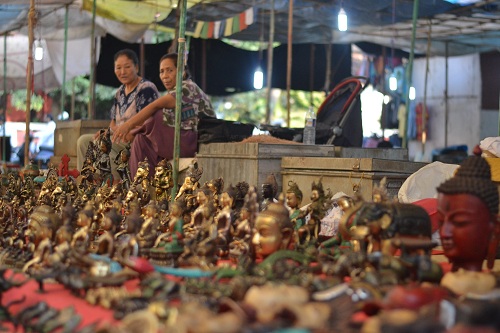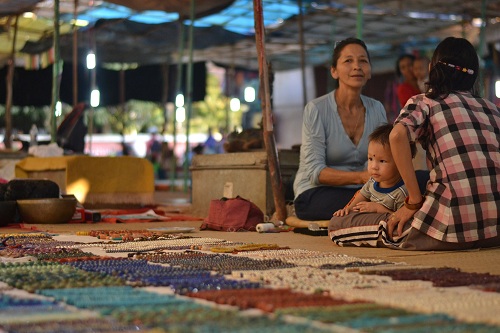Handicraft markets are familiar sights to travelers. Most tourists stroll through them out of curiosity. Those that do shop have very basic exchanges with the sellers, mainly focused on bargaining. Prior to today, handicraft markets have been somewhat of an annoyance to our traveling family. We aren’t purchasing anything during our trip, so they provide little practical value. We don’t enjoy browsing because they are usually so crowded we worry about losing a kid or them breaking something. Furthermore, after four weeks in Asia, we’ve found that the markets run into each other regardless of country. There are always the handbags, Buddha statues, jewelry, shawls…

So we were somewhat surprised to find ourselves trying to save a handicraft market today.
Our family supports the Free Tibet movement, and my mother has gotten to know some of Goa’s Tibetan community. We went with her to a fundraiser organized by the Tibetan Welfare Association. The fundraiser was for the 300 or so Tibetans that come to Goa during the winter high season to earn some money selling handicrafts. They spend the rest of the year in northern India, where they mostly work in some form of tourism.
In order to sell their wares, the Tibetans take out sizable loans to purchase goods and pay rent. This year has been a particularly hard year for tourism, so the community banded to raise money to support each other. Many of these sellers have left family behind in hopes of making a living. All of them are refugees. Loans are hard to come by because of their refugee status, and the community is the only means of support.

The fundraiser included an art installation wishing wall by Subodh Kerkar.

Under Tibetan prayer flags, one could tie blessed cloth, make a wish and a donation to support the sellers.

The event was technically a food festival, and there were plenty of juicy Tibetan momos (dumplings) and noodles for sale.

We’ve always been supporters of the Free Tibet movement, and after spending the day tying wishes, purchasing food and chatting with some of the sellers, we felt invested in making sure the market continued. While we stuck to our trip mentality of not purchasing anything, we did make a donation to the wishing wall.

I’m not claiming that we are going to frequent handicraft markets going forward. However, we certainly have a better appreciation for what some of the sellers go through to make a living.

